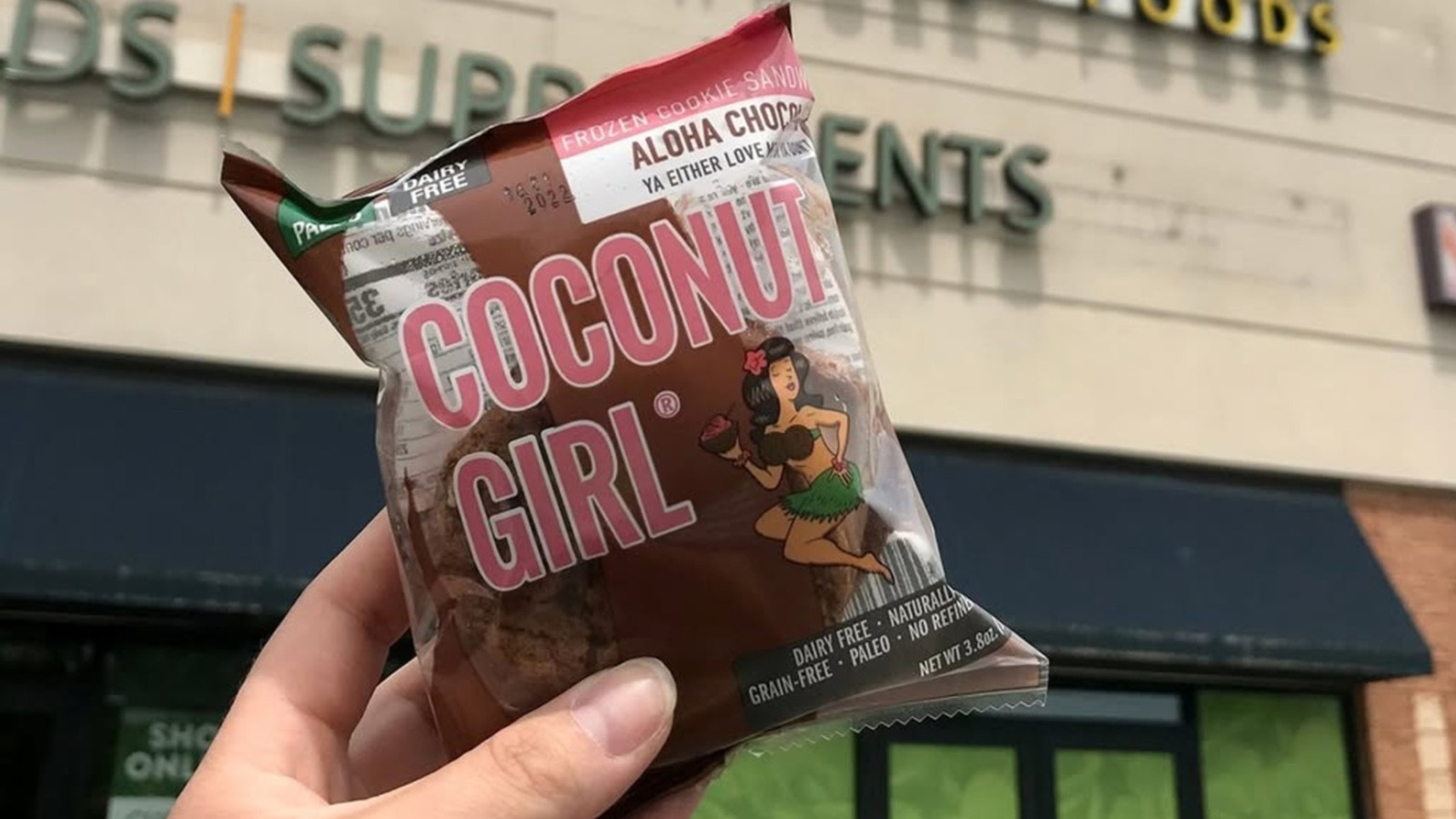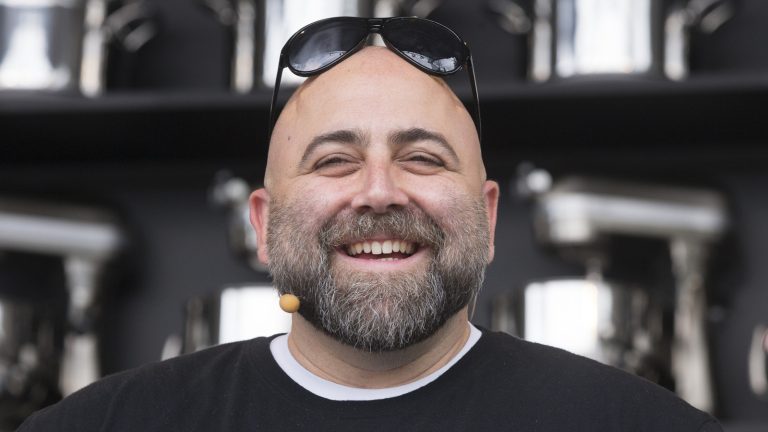You wouldn’t have blamed the “Shark Tank” panel if they seemed a little skeptical about the young woman who rode into the tank on what she called the “Icicle Tricycle” asking for $180,000 for 18% of her business. But when the sharks heard about and then tasted her dairy- and gluten-free ice cream sandwiches, the tank turned into a feeding frenzy, with three of the sharks trying to make offers.
That’s what happened when Francheska “Frankie” Yamsuan sought funding for Coconut Girl, a coconut milk-based frozen treat she created after attending culinary school. She created one recipe, for a date shake, to align with the Paleo diet she had recently adopted and froze it. After sharing it with her gym friends, she was soon selling her faux ice cream by the pint to other local gyms. Noticing that her customers were starting to make sandwiches with the frozen delight, she started doing the same.
Yamsuan started selling the treats at fitness events and farmers’ markets from a tricycle with an attached freezer, modeled after the push carts used to sell ice cream in the Philippines. The entrepreneur was born in Southeast Asian country and came to the United States at age 5. By the time she appeared on “Shark Tank,” her product had been picked up by Whole Foods and was in 30 stores across four states. She had also signed on with a national healthy foods distributor, United Natural Foods (UNFI).
What happened to Coconut Girl on Shark Tank?
Frankie Yamsuan brought her beach girl vibes to Shark Tank during the show’s eleventh season and positioned her frozen treats as being “out of this world” indulgences made with “all natural, good-for-you” ingredients like dates, honey, maple syrup, and organic coconut milk. Coconut milk is a great replacement for heavy cream in many recipes, including ice cream. In fact, vegan culinary TV personality, chef, and cookbook author Priyanka Naik told Chowhound that coconut milk is the best dairy-free milk to use in ice cream. The cookies were made with almond butter and cacoa nibs. “We all want to indulge ourselves without compromising our healthy lifestyles, right?” Yamsuan said to the panel, receiving nods from the sharks.
Once they affirmed the treats’ great taste (“This is amazing,” Robert Herjavec said), the sharks asked the usual questions about sales, costs, and distribution. Sales of the product, which sold for $4.99 to $5.49 each and cost $1 to produce, were expected to reach $300,000 the year her episode aired, 2020, her third selling at retail. Sales were $120,000 the previous year and $60,000 the year before that. Before selling in stores, a retailer asked her if the products were available wholesale. “I lied and said, ‘Yeah I do retail.'” Since she was still making the products on her own when the show aired, she was hoping the investment from the sharks would help her find a co-packer and get her food costs down to 50 cents per sandwich.
Mark Cuban jumped in quickly and offered Yamsuan $180,000 for 25% of the company. Lori Grenier tried to chime in, saying, “I’m your customer,” but Cuban insisted Yamsuan accept his offer or he was out. Kevin O’Leary then offered the $180,000 for 20% and Cuban said he’d do the same. Yamsuan took the deal and walked out of the tank saying she had hoped she would get Mark Cuban as her partner. Cuban, for his part, seemed, just as enthusiastic about Coconut Girl as he was about his Shark Tank investment in Bruw coffee.
Coconut Girl after Shark Tank
As Frankie Yamsuan told the Badass Basic B**** podcast hosts in 2021, “About a week after the episode aired, the pandemic craziness happened.” The business had the same supply chain and distribution challenges other companies faced at the time and Yamsuan said they had to push through them. She also said that prior to appearing on “Shark Tank,” she had never sought investors. “It’s kind of crazy that I went on national TV to get that money.” She used Mark Cuban’s investment to bring on manufacturing partners and to outsource some of the work she had been doing in-house. Prior to that, she told Seth Silvers on his YouTube show, Small Business Storytellers, “I was literally in the kitchen seven days a week trying to fill all these orders from Whole Foods and UNFI.” Although she isn’t as hands on as she was, “It has now allowed me to make better decisions, refocus on the business, and develop new products so I can’t complain.” On Badass Basic B****, she described Cuban as being very responsive to her but not overly so.
Two years later, when Diane Jarrar went on “Shark Tank” to pitch her business, Magic Dates, she told the sharks she had worked with Yamsuan. Cuban interrupted to give an update on Coconut Girl and said the business was doing very well and that Yamsuan had sold part of her company. There is not much else known about how Coconut Girl fared. According to Yamsuan’s LinkedIn profile, she served as chief executive officer of the company until January of 2024. The company’s last Instagram post was in April of 2024 and its website has since been turned off.
Why did Coconut Girl go out of business?
Frankie Yamsuan hasn’t given any interviews or shared any updates on social media since Coconut Girl ceased operations. However, she did tell Small Business Storytellers’ Seth Silvers one of her biggest obstacles was convincing manufacturers that her product could be made to her specifications. “I’m basically trying to disrupt the ice cream industry. I’m using nontypical ice cream ingredients.” Saying how important it was for her to stick to her mission, she added, “Most of them think I’m crazy.”
What’s next for Coconut Girl’s founder?
Frankie Yamsuan hasn’t publicly said what she’s doing now or planning for the future. She did tell Silvers she had made a promise to herself when she dropped out of college: “If I’m going to drop out, I’m going to do something with my life or I’ll go back to college.” And, although she wasn’t fond of the word skinny, she did want to be the next Skinny Girl brand.
Still, it sounds like Yamsuan has achieved at least one of her life goals. “I always knew that I wanted to be a business owner,” she said. “I wanted to have a product that I believed in and that I was obsessed with.”





